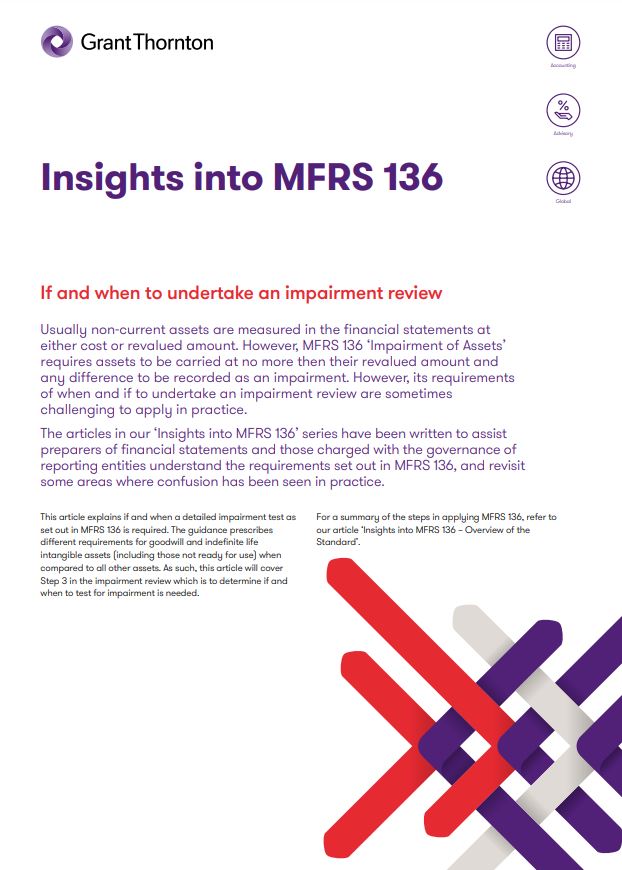-
Audit approach
Designing a tailored audit programme customised for your business, we will combine the collective skill and experience of assurance professionals around the world to deliver an audit that is efficient and provides assurance to your key stakeholders.
-
Audit methodology
We have adopted Grant Thornton International's Horizon audit approach and Voyager software, a revolutionary paperless audit designed to achieve a consistent standard of audit service.
-
MFRS
At Grant Thornton, our MFRS advisers can help you navigate the complexity of financial reporting.
-
Our local experts
Our local experts
-
Tax advisory & compliance
Our teams can prepare corporate tax files and ruling requests, support you with deferrals, accounting procedures and legitimate tax benefits.
-
Corporate & individual tax
Our teams can prepare corporate tax files and ruling requests, support you with deferrals, accounting procedures and legitimate tax benefits.
-
International tax & Global mobility services
Our teams have in-depth knowledge of the relationship between domestic and international tax laws.
-
Indirect tax
Our indirect tax specialists help clients in effective planning; assist to bring clarity to the legislation; assist and advise in audits or investigations. It is important for all entities, whether or not required to register for Sales Tax or Service Tax to analyse the impact of the taxes on their business operations, their revenues and expenses, and their customers and suppliers.
-
Tax audit & investigation
Tax audit and investigation
-
Transfer pricing
Transfer pricing
-
Corporate finance
Whether you are raising capital, disposing of a business or seeking a wider market for your company's shares on a stock market, we are ready to help make it a successful and stress-free experience for you.
-
Forensic and investigation
Forensic and investigation
-
Business risk services
We can help you identify, understand and manage potential risks to safeguard your business and comply with regulatory requirements.
-
Recovery and reorganisation
We provide a wide range of services to recovery and reorganisation professionals, companies and their stakeholders.
-
Business consulting
Business consulting
-
Our values
We have six CLEARR values that underpin our culture and are embedded in everything we do.
-
Learning & development
At Grant Thornton we believe learning and development opportunities help to unlock your potential for growth, allowing you to be at your best every day. And when you are at your best, we are the best at serving our clients
-
In the community
Many Grant Thornton member firms provide a range of inspirational and generous services to the communities they serve.
-
Internship
Internship
-
Internship
Internship

The articles in our ‘Insights into MFRS 136’ series have been written to assist preparers of financial statements and those charged with the governance of reporting entities understand the requirements set out in MFRS 136, and revisit some areas where confusion has been seen in practice.
This article explains if and when a detailed impairment test as set out in MFRS 136 is required. The guidance prescribes different requirements for goodwill and indefinite life intangible assets (including those not ready for use) when compared to all other assets.
As such, this article will cover Step 3 in the impairment review which is to determine if and when to test for impairment is needed.
How we can help
We hope you find the information in this article helpful in giving you some insight into MFRS 136. If you would like to discuss any of the points raised, please do not hesitate to contact us.


